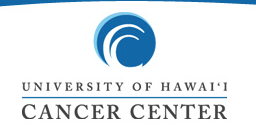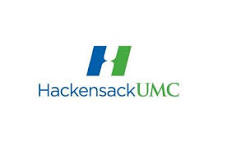Chemotherapy Followed by Peripheral Stem Cell Transplantation in Treating Children With Newly Diagnosed Brain Tumor
| Status: | Withdrawn |
|---|---|
| Conditions: | Cancer, Brain Cancer, Brain Cancer, Brain Cancer |
| Therapuetic Areas: | Oncology |
| Healthy: | No |
| Age Range: | Any - 10 |
| Updated: | 4/21/2016 |
| Start Date: | November 1997 |
Dose Intensive Chemotherapy for Children Less Than Ten Years of Age Newly-Diagnosed With Malignant Brain Tumors: A Pilot Study of Two Alternative Intensive Induction Chemotherapy Regimens, Followed by Consolidation With Myeloablative Chemotherapy (Thiotepa, Etoposide and Carboplatin) and Autologous Stem Cell Rescue
RATIONALE: Drugs used in chemotherapy use different ways to stop tumor cells from dividing
so they stop growing or die. Combining chemotherapy with peripheral stem cell
transplantation may allow the doctor to give higher doses of chemotherapy drugs and kill
more tumor cells.
PURPOSE: Phase II trial to study the effectiveness of different regimens of combination
chemotherapy followed by peripheral stem cell transplantation in treating children who have
newly diagnosed brain tumor.
so they stop growing or die. Combining chemotherapy with peripheral stem cell
transplantation may allow the doctor to give higher doses of chemotherapy drugs and kill
more tumor cells.
PURPOSE: Phase II trial to study the effectiveness of different regimens of combination
chemotherapy followed by peripheral stem cell transplantation in treating children who have
newly diagnosed brain tumor.
OBJECTIVES:
- Investigate the toxicity of and response rate to an intensification of an induction
chemotherapy regimen (regimen A: cisplatin, vincristine, cyclophosphamide, and
etoposide) by incorporation of high-dose methotrexate with leucovorin calcium rescue in
patients with primitive neuroectodermal tumors and evidence of leptomeningeal
dissemination (M1, M2, or M3).
- Investigate the toxicity of and response rate to a new dose intensive induction
chemotherapy regimen (regimen C: vincristine, carboplatin, and temozolomide) in
children under ten years of age who are newly diagnosed with either high grade gliomas
or diffuse intrinsic pontine tumors. (Regimen B closed to accrual effective 3/30/2000;
regimen C open to accrual effective 7/21/2000)
- Investigate the feasibility of utilizing regimen C chemotherapy followed by
consolidation with myeloablative chemotherapy and autologous stem cell (either bone
marrow and/or peripheral blood) rescue in these patients. (Regimen B closed to accrual
effective 3/30/2000; regimen C open to accrual effective 7/21/2000)
- Investigate the toxicity of and response rate to an intensification of induction
regimen A chemotherapy by incorporation of high-dose methotrexate with leucovorin
calcium rescue in patients with primitive neuroectodermal tumors and evidence of
leptomeningeal dissemination (M1, M2, or M3).
- Estimate the time to disease progression and the pattern of relapse in patients who do
not have radiographic or cytologic evidence of residual disease at the time of
consolidation chemotherapy and who, therefore, do not receive post consolidation
irradiation.
- Estimate the time to disease progression and the pattern of relapse in patients who
have radiographic or cytologic evidence of residual disease at the time of
consolidation chemotherapy and who, therefore, receive post consolidation irradiation.
- Assess the morbidity and mortality of the consolidation chemotherapy regimen following
either regimen C or the intensified regimen A in these patients. (Regimen B closed to
accrual effective 3/30/2000; regimen C open to accrual effective 7/21/2000)
- Assess the impact that irradiation avoidance or the administration of reduced volume
craniospinal and/or focused field local irradiation has on neuropsychometric,
endocrinological functions, and physical growth.
OUTLINE: This is a two regimen study based on disease characteristics.
Patients in regimens A, B, and C undergo leukapheresis after receiving filgrastim (G-CSF) by
subcutaneous (SC) injections.
- Regimen A: Patients without evidence of neuraxis dissemination receive five 21 day
courses of the following chemotherapy: cisplatin IV over 6 hours on day 0; etoposide
and cyclophosphamide IV over 1 hour on days 1 and 2; vincristine IV on days 0, 7, and
14 of courses 1, 2, and 3; and G-CSF SC beginning on day 3 of each course and
continuing until blood counts recover or up to 48 hours before the start of the next
course. Patients with evidence of neuraxis dissemination also receive high-dose
methotrexate IV over 4 hours on day 3 and leucovorin calcium orally or by IV bolus
starting 24 hours prior to methotrexate and continuing every 6 hours until methotrexate
levels have diminished.
- Regimen B (closed to accrual effective 3/30/2000): Patients receive three 21-28 day
courses of the following chemotherapy: vincristine IV on days 0, 7, and 14 of each
course; carboplatin IV over 4 hours on days 3 and 4 of each course; oral procarbazine
daily on days 0-4; oral lomustine on days 3 and 4; and G-CSF SC daily beginning 24
hours following the last dose of carboplatin and continuing until blood counts recover
or up to 48 hours before the start of the next course. On day 7 of each course,
patients also receive peripheral blood stem cell (PBSC) reinfusion following
chemotherapy. Oral lomustine is administered only for the first two courses.
- Regimen C (open to accrual effective 07/21/2000): Patients receive four 28 day courses
of the following chemotherapy: carboplatin IV over 4 hours on days 0 and 1 of each
course; vincristine IV on days 0, 7, and 14 of the first three courses only; oral
temozolomide daily on days 0-4; and G-CSF SC daily beginning on day 5 and continuing
until blood counts recover.
After regimen A, B, or C and in the absence of disease progression, patients undergo
consolidation myeloablative chemotherapy by receiving carboplatin IV over 4 hours on days
-8, -7, and -6, and then thiotepa IV over 3 hours followed by etoposide IV on days -5, -4,
and -3. Patients with malignant gliomas or unbiopsied diffuse intrinsic pontine tumors do
not receive etoposide. On day 0, patients are reinfused with autologous PBSC. Following
recovery from consolidation chemotherapy, patients with radiographic or cytologic evidence
of residual disease undergo radiotherapy.
Patients are followed at 3 months, then every 3 months for the first 2 years, then every 6
months for years 2-4, and then annually thereafter.
PROJECTED ACCRUAL: Approximately 96 patients (73 for regimen A and 23 for regimen C) will be
accrued for this study. (Regimen B closed to accrual effective 3/30/2000.)
- Investigate the toxicity of and response rate to an intensification of an induction
chemotherapy regimen (regimen A: cisplatin, vincristine, cyclophosphamide, and
etoposide) by incorporation of high-dose methotrexate with leucovorin calcium rescue in
patients with primitive neuroectodermal tumors and evidence of leptomeningeal
dissemination (M1, M2, or M3).
- Investigate the toxicity of and response rate to a new dose intensive induction
chemotherapy regimen (regimen C: vincristine, carboplatin, and temozolomide) in
children under ten years of age who are newly diagnosed with either high grade gliomas
or diffuse intrinsic pontine tumors. (Regimen B closed to accrual effective 3/30/2000;
regimen C open to accrual effective 7/21/2000)
- Investigate the feasibility of utilizing regimen C chemotherapy followed by
consolidation with myeloablative chemotherapy and autologous stem cell (either bone
marrow and/or peripheral blood) rescue in these patients. (Regimen B closed to accrual
effective 3/30/2000; regimen C open to accrual effective 7/21/2000)
- Investigate the toxicity of and response rate to an intensification of induction
regimen A chemotherapy by incorporation of high-dose methotrexate with leucovorin
calcium rescue in patients with primitive neuroectodermal tumors and evidence of
leptomeningeal dissemination (M1, M2, or M3).
- Estimate the time to disease progression and the pattern of relapse in patients who do
not have radiographic or cytologic evidence of residual disease at the time of
consolidation chemotherapy and who, therefore, do not receive post consolidation
irradiation.
- Estimate the time to disease progression and the pattern of relapse in patients who
have radiographic or cytologic evidence of residual disease at the time of
consolidation chemotherapy and who, therefore, receive post consolidation irradiation.
- Assess the morbidity and mortality of the consolidation chemotherapy regimen following
either regimen C or the intensified regimen A in these patients. (Regimen B closed to
accrual effective 3/30/2000; regimen C open to accrual effective 7/21/2000)
- Assess the impact that irradiation avoidance or the administration of reduced volume
craniospinal and/or focused field local irradiation has on neuropsychometric,
endocrinological functions, and physical growth.
OUTLINE: This is a two regimen study based on disease characteristics.
Patients in regimens A, B, and C undergo leukapheresis after receiving filgrastim (G-CSF) by
subcutaneous (SC) injections.
- Regimen A: Patients without evidence of neuraxis dissemination receive five 21 day
courses of the following chemotherapy: cisplatin IV over 6 hours on day 0; etoposide
and cyclophosphamide IV over 1 hour on days 1 and 2; vincristine IV on days 0, 7, and
14 of courses 1, 2, and 3; and G-CSF SC beginning on day 3 of each course and
continuing until blood counts recover or up to 48 hours before the start of the next
course. Patients with evidence of neuraxis dissemination also receive high-dose
methotrexate IV over 4 hours on day 3 and leucovorin calcium orally or by IV bolus
starting 24 hours prior to methotrexate and continuing every 6 hours until methotrexate
levels have diminished.
- Regimen B (closed to accrual effective 3/30/2000): Patients receive three 21-28 day
courses of the following chemotherapy: vincristine IV on days 0, 7, and 14 of each
course; carboplatin IV over 4 hours on days 3 and 4 of each course; oral procarbazine
daily on days 0-4; oral lomustine on days 3 and 4; and G-CSF SC daily beginning 24
hours following the last dose of carboplatin and continuing until blood counts recover
or up to 48 hours before the start of the next course. On day 7 of each course,
patients also receive peripheral blood stem cell (PBSC) reinfusion following
chemotherapy. Oral lomustine is administered only for the first two courses.
- Regimen C (open to accrual effective 07/21/2000): Patients receive four 28 day courses
of the following chemotherapy: carboplatin IV over 4 hours on days 0 and 1 of each
course; vincristine IV on days 0, 7, and 14 of the first three courses only; oral
temozolomide daily on days 0-4; and G-CSF SC daily beginning on day 5 and continuing
until blood counts recover.
After regimen A, B, or C and in the absence of disease progression, patients undergo
consolidation myeloablative chemotherapy by receiving carboplatin IV over 4 hours on days
-8, -7, and -6, and then thiotepa IV over 3 hours followed by etoposide IV on days -5, -4,
and -3. Patients with malignant gliomas or unbiopsied diffuse intrinsic pontine tumors do
not receive etoposide. On day 0, patients are reinfused with autologous PBSC. Following
recovery from consolidation chemotherapy, patients with radiographic or cytologic evidence
of residual disease undergo radiotherapy.
Patients are followed at 3 months, then every 3 months for the first 2 years, then every 6
months for years 2-4, and then annually thereafter.
PROJECTED ACCRUAL: Approximately 96 patients (73 for regimen A and 23 for regimen C) will be
accrued for this study. (Regimen B closed to accrual effective 3/30/2000.)
DISEASE CHARACTERISTICS:
- Histologically confirmed malignant, newly diagnosed brain tumor
Regimen A:
- Posterior fossa medulloblastoma/primitive neuroectodermal tumor (PNET):
- All stages, under 3 years at diagnosis OR
- High stage (local residual tumor postoperatively and/or neuraxis or extraneural
dissemination), 3-10 years at diagnosis
- Supratentorial PNET, pineoblastoma, cerebral neuroblastoma, ependymoblastoma,
medulloepithelioma, medullomyoblastoma:
- All stages, under 10 years at diagnosis
- Brainstem PNET:
- All stages, irrespective of extent of resection, under 10 years at diagnosis
- Ependymoma or anaplastic ependymoma:
- All stages, any location (except primary spinal cord ependymoma), under 3 years
at diagnosis OR
- Local residual tumor postoperatively and/or neuraxis dissemination, any
location, 3-10 years at diagnosis
- Supratentorial ependymoma:
- All stages, irrespective of extent of resection, under 10 years at diagnosis,
excluding gross totally resected (confirmed by postoperative MRI) low grade
ependymoma not invading the ventricular system
- Metastatic retinoblastoma:
- Previously untreated (except for cryosurgery or laser surgery), under 10 years
at presentation of metastatic disease
- Primary atypical teratoid/rhabdoid tumors of the CNS:
- Under 10 years at diagnosis
- Choroid plexus carcinoma:
- Incompletely resected, all sites, under 10 years at diagnosis
Regimen C:
- Anaplastic astrocytoma, glioblastoma multiforme, anaplastic oligodendroglioma,
anaplastic ganglioglioma, other anaplastic mixed gliomas:
- Under 10 years at diagnosis
- Diffuse intrinsic pontine tumors:
- Unbiopsied, under 10 years at diagnosis
The following diagnoses are not eligible:
- Myxopapillary ependymoma of the spinal cord, low grade brainstem astrocytoma, primary
CNS lymphoma or solid leukemic lesion (i.e., chloroma, granulocytic sarcoma), or
primary CNS germ cell tumor
PATIENT CHARACTERISTICS:
Age:
- Under 10 at diagnosis
Performance status:
- Not specified
Life expectancy:
- Not specified
Hematopoietic:
- Not specified
Hepatic:
- Bilirubin less than 1.5 mg/dL
- SGPT less than 2.5 times upper limit of normal
Renal:
- Creatinine clearance greater than 60 mL/min
PRIOR CONCURRENT THERAPY:
Biologic therapy:
- Not specified
Chemotherapy:
- No prior chemotherapy
Endocrine therapy:
- Prior corticosteroids allowed
- No concurrent corticosteroids for the sole purpose of antiemesis
Radiotherapy:
- No prior radiotherapy
Surgery:
- See Disease Characteristics
- Recovered from prior surgery
We found this trial at
18
sites
Cancer Research Center of Hawaii The University of Hawaii Cancer Center is the only National...
Click here to add this to my saved trials
Children's Hospital of Philadelphia Since its start in 1855 as the nation's first hospital devoted...
Click here to add this to my saved trials
100 Nicolls Rd
Stony Brook, New York 11790
Stony Brook, New York 11790
Click here to add this to my saved trials
Click here to add this to my saved trials
Click here to add this to my saved trials
Hackensack University Medical Center Hackensack University Medical Center, part of the Hackensack University Health Network,...
Click here to add this to my saved trials
Click here to add this to my saved trials
Click here to add this to my saved trials
Winthrop University Hospital Founded in 1896 by a group of local physicians and concerned citizens,...
Click here to add this to my saved trials
Click here to add this to my saved trials
Click here to add this to my saved trials
Click here to add this to my saved trials
Memorial Sloan Kettering Cancer Center Memorial Sloan Kettering Cancer Center — the world's oldest and...
Click here to add this to my saved trials
Click here to add this to my saved trials
Click here to add this to my saved trials
Click here to add this to my saved trials
Click here to add this to my saved trials




